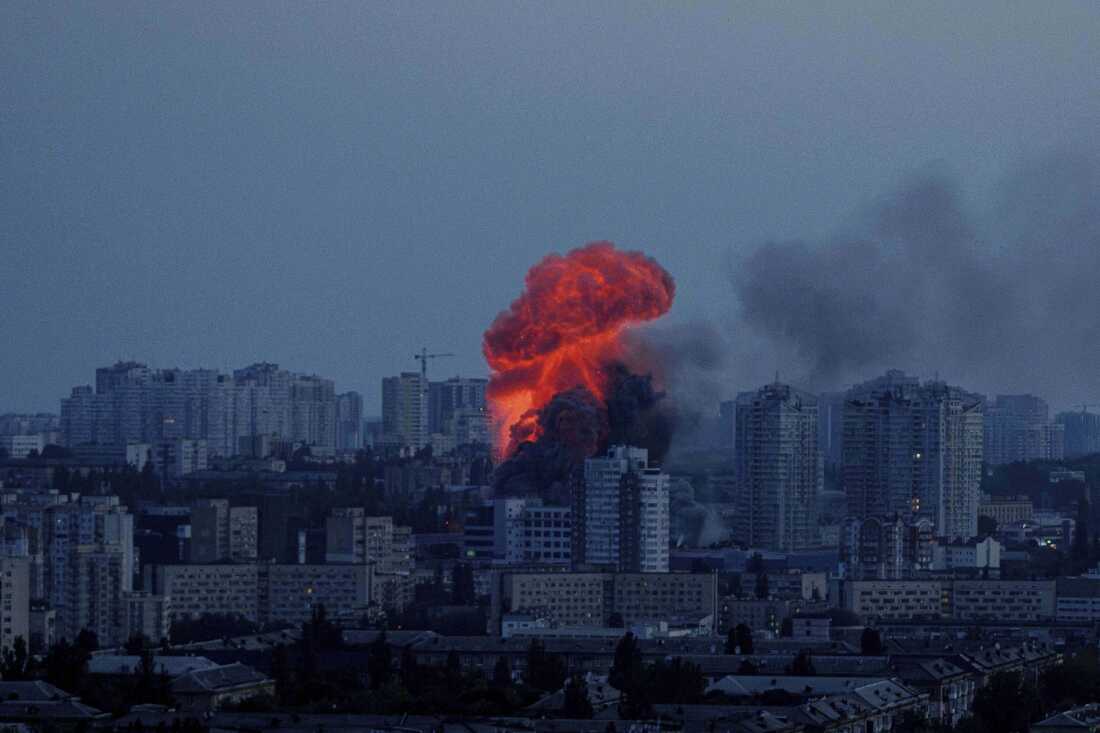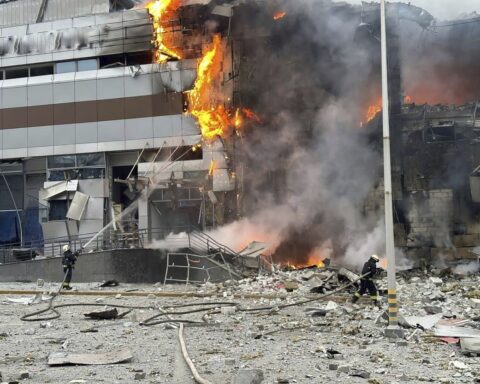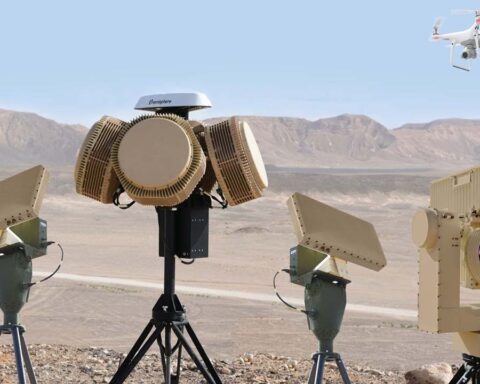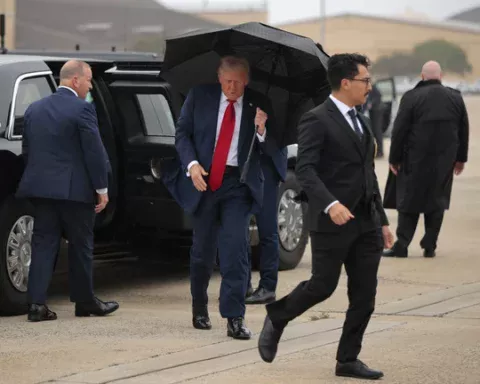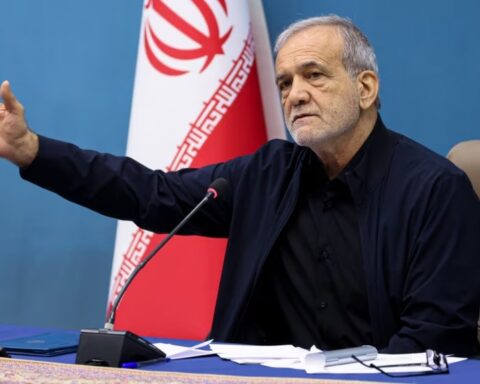In a chilling escalation of the ongoing Russia-Ukraine conflict, Russia unleashed one of the war’s largest air attacks on Ukraine, targeting cities and infrastructure across the country with a barrage of drones and missiles. This devastating assault, which claimed lives and left widespread destruction, came as a direct response to Ukraine’s audacious drone raid on Russian strategic bomber bases just days earlier. The tit-for-tat strikes underscore the intensifying cycle of retaliation as peace talks falter and both nations brace for a protracted conflict.
The assault occurred on June 6, 2025, shaking the Ukrainian capital, Kyiv, and other regions with the relentless buzz of drones, air raid sirens, and explosions that shattered the early morning calm. Ukrainian President Volodymyr Zelensky reported that Russia deployed over 400 drones and 40 missiles, targeting nine regions from Lviv in the west to Sumy in the northeast. The attack killed at least four people, injured dozens, and damaged residential buildings, schools, and critical infrastructure, marking it as one of the most extensive aerial bombardments since Russia’s invasion began in February 2022.
A Retaliatory Barrage Echoes Across Ukraine
Russia’s Ministry of Defense framed the attack as a response to what it called Ukraine’s “terrorist acts,” specifically referencing Kyiv’s daring “Spiderweb” operation on June 1. That Ukrainian assault targeted Russian air bases, destroying or damaging dozens of strategic bombers, including Tu-95 and Tu-22M aircraft, which have been instrumental in Russia’s long-range missile strikes on Ukrainian cities. The operation, meticulously planned over 18 months, involved smuggling drones into Russia on trucks and launching them from close proximity to airfields as far away as Siberia. Ukrainian officials hailed it as a tactical and symbolic victory, claiming it struck 34% of Moscow’s nuclear-capable bomber fleet, costing Russia an estimated $7 billion.
Friday’s Russian assault, however, demonstrated Moscow’s resolve to hit back hard. In Kyiv, air defenses worked frantically to intercept the incoming drones and missiles, with machine gun fire and anti-aircraft systems lighting up the night sky. Residents huddled in underground shelters for hours, a grim routine for a population enduring over three years of war. In the northwestern city of Lutsk, near Poland’s border, at least five people were injured as missiles struck, while Ternopil reported damage to homes, schools, and government facilities. The Ukrainian Air Force reported intercepting 199 drones and 36 missiles, but the sheer scale of the attack overwhelmed defenses in some areas, leaving a trail of destruction.
Ukraine’s Bold Strike Sets the Stage
The roots of Russia’s massive retaliation lie in Ukraine’s unprecedented drone operation, dubbed “Spiderweb,” which caught the Kremlin off-guard. On June 1, Ukrainian forces launched 117 drones targeting air bases in Murmansk, Irkutsk, Ivanovo, Ryazan, and Amur, spanning five time zones. The operation was a logistical marvel, with drones hidden in wooden cabins on trucks, their roofs remotely opened to unleash the attack. Videos verified by independent analysts showed drones striking Russian aircraft, with flames erupting from strategic bombers at bases like Olenya and Belaya. Ukrainian officials claimed at least 13 aircraft were destroyed, including critical Tu-95 and Tu-22M bombers, which are no longer in production, making their loss particularly costly for Russia.
The strike was not just a military blow but a psychological one, exposing vulnerabilities in Russia’s air defenses and embarrassing Moscow’s military establishment. Russian military bloggers called it a “black day” for their long-range aviation, with some pro-Kremlin voices advocating for a nuclear response. Ukraine’s Security Service (SBU) emphasized that the targeted aircraft had been used to bomb Ukrainian cities, framing the operation as a justified counterstrike against Russia’s relentless campaign. The timing, just before peace talks in Istanbul, suggested Ukraine aimed to strengthen its negotiating position by proving it could strike deep into Russian territory.
Russia Launches One of War’s Largest Air Attacks
Russia’s response on June 6 was swift and ferocious, signaling that President Vladimir Putin was not willing to let Ukraine’s provocation go unanswered. The assault involved 407 drones, nearly 40 cruise missiles, and six ballistic missiles, launched from air, sea, and ground platforms. Ukrainian officials described it as the second-largest drone attack of the war, surpassed only by a 472-drone barrage the previous weekend. In Kyiv, a residential building was hit, and metro tracks were damaged, disrupting the city’s train system. In Kharkiv, Sumy, and Luhansk, air raid alerts forced civilians into shelters as missiles rained down.
The human toll was stark. In Kyiv, three first responders were among the dead, with 20 others wounded. Across the country, at least 49 people were injured, and six districts in the capital reported damage. Power outages affected thousands, with Ukraine’s energy operator DTEK reporting that over 2,000 people lost electricity. Images from Kyiv showed flames rising from apartment buildings and firefighters battling blazes as residents sifted through debris. Despite the devastation, Kyiv residents expressed defiance, with one local, Olha, telling reporters, “It didn’t break us at all. The morale is as high as it was. We strongly believe in our armed forces.”
Geopolitical Ripples and Failed Peace Talks
The timing of Russia’s attack, days after a call between Putin and U.S. President Donald Trump, added a layer of complexity to the conflict. Trump, who has pushed for a ceasefire, recounted that Putin vowed to “very strongly” respond to Ukraine’s strikes. However, Trump’s account suggested he did not urge restraint, prompting criticism from Ukrainian officials. Lawmaker Oleksandr Merezhko expressed dismay, stating, “When Putin mentioned he is going to avenge or deliver a new strike against Ukraine, we know what it means. It’s about civilians. And President Trump didn’t say, ‘Vladimir, stop.’” Zelensky, in a thinly veiled rebuke, called for global pressure on Russia, warning that inaction equates to “complicity and accountability.”
The assault came on the heels of faltering peace talks in Istanbul, where Ukraine demanded an unconditional ceasefire and Russia insisted on terms tantamount to surrender, including Ukraine’s neutrality and demilitarization. The talks, mediated by Turkey, yielded little progress, with Russia sending a low-level delegation, signaling a lack of seriousness. Ukraine’s Foreign Minister Andrii Sybiha condemned Russia’s attack as a response to its lost bombers, accusing Moscow of targeting civilians. Meanwhile, Ukraine continued its offensive, striking two additional Russian airfields in Saratov and Ryazan on Thursday night, targeting aircraft unscathed by the earlier “Spiderweb” operation.
Strategic Implications and Future Risks
Ukraine’s “Spiderweb” operation has reshaped the strategic landscape. By targeting Russia’s aging bomber fleet, Kyiv dealt a blow to Moscow’s ability to launch cruise missile attacks, though analysts note that Russia’s increased reliance on drones and ballistic missiles mitigates some of the impact. The loss of Tu-95 and Tu-22M bombers, which are difficult to replace due to discontinued production, forces Russia to invest heavily in fortifying its air bases with electronic warfare systems and physical barriers. However, the operation’s success highlights the vulnerability of large military bases to low-cost drone attacks, prompting NATO allies to reassess their own defenses.
For Ukraine, the operation was a propaganda victory, boosting morale and demonstrating its ability to strike thousands of miles into Russian territory. Yet, it also risks escalation. Russian hardliners, humiliated by the attack, have called for severe retaliation, with some invoking the specter of nuclear strikes. While Russia’s nuclear capabilities remain intact, with submarines and intercontinental ballistic missiles unaffected, the rhetoric underscores the war’s precarious trajectory. U.S. officials, while impressed by Ukraine’s ingenuity, noted that the strikes were conducted without American coordination, reflecting Kyiv’s awareness that targeting nuclear-capable assets could provoke objections from Washington.
A War Without End in Sight
As the dust settles from Russia’s massive air assault, both sides show little inclination to back down. Ukraine’s strikes on Russian airfields and the Kerch Bridge, which connects Russia to occupied Crimea, demonstrate its determination to keep Moscow on the defensive. Russia, meanwhile, continues to pummel Ukrainian cities, leveraging its numerical advantage in drones and missiles. The failure of peace talks and the lack of decisive international intervention suggest that the conflict, now in its fourth year, is far from resolution.
For Ukrainians, the war remains a daily struggle, with air raid sirens and shelter stays a grim reality. Yet, the resilience of Kyiv’s residents and the ingenuity of its military signal that Ukraine will continue to fight, even as Russia’s retaliatory strikes grow in scale. As Zelensky urged the world to act, the international community faces a stark choice: apply pressure to halt the cycle of violence or risk further escalation in a war that threatens to redefine global security.
This article is based on reports from CNN, BBC, The New York Times, NBC News, and other media outlets.
Focus Keywords: Russia-Ukraine war, Russian air attack, Ukraine drone strike, Spiderweb operation, Kyiv bombardment, strategic bombers, peace talks, Zelensky, Putin, retaliation




